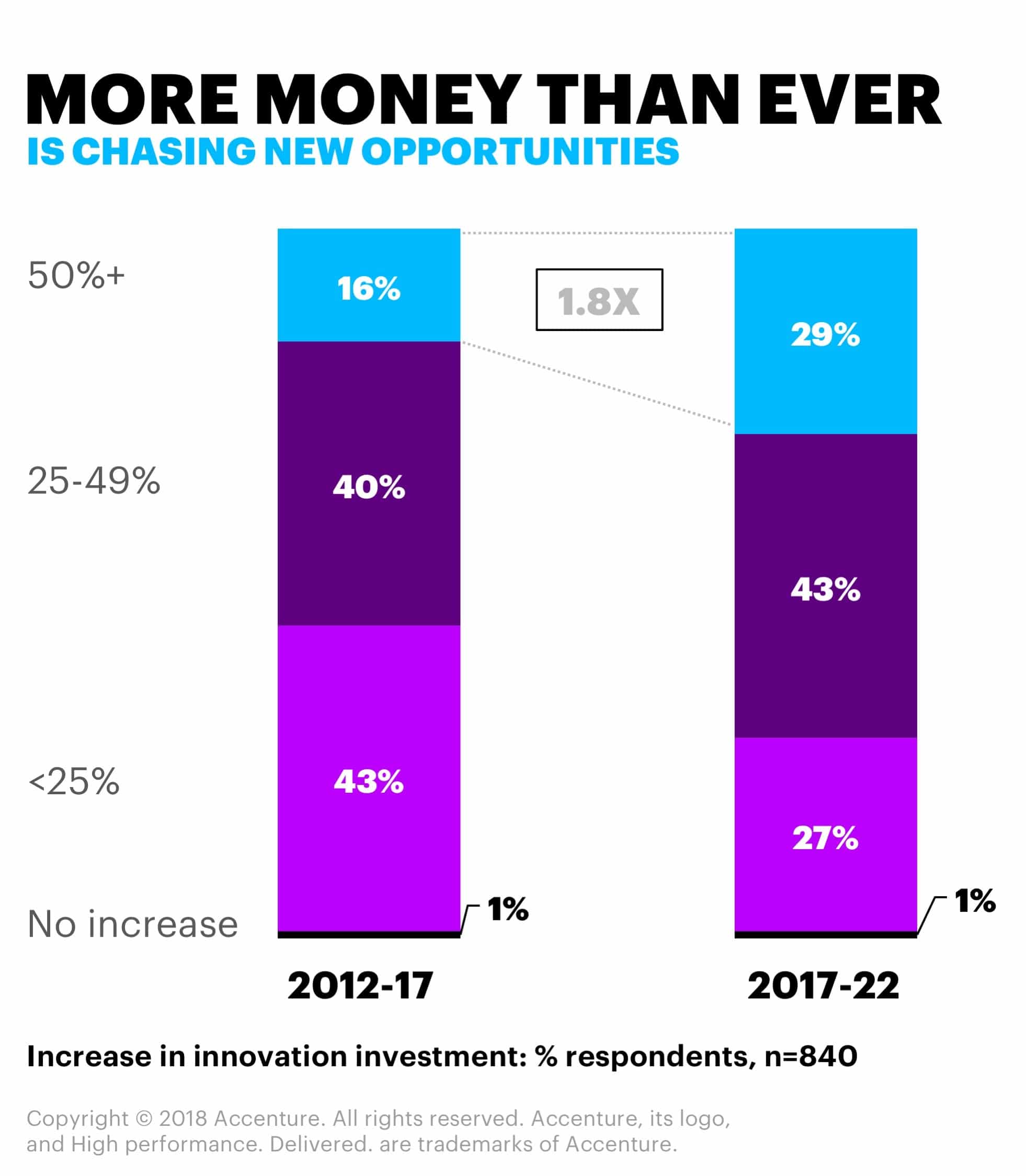Only one in seven companies is able to tap into the full potential of technology-enabled innovations, with most others missing out on an opportunity for both strong growth in profits and market capitalization, according to a new research report from Accenture that identifies several practices of high-growth companies that have enabled them to gain significant value from innovations where others have failed.
The report, How to Unlock the Value of Your Innovation Investments, surveyed C-level executives at 840 large companies across 14 industries and eight countries. The research found that approximately one in seven (14 percent) of the organizations surveyed are generating significant value from their innovation investments—and identified the innovation approach of these high-growth companies and what other companies can learn from them.
The research found that companies’ return on innovation investments declined 27 percent over the past five years and notes that the gap between what technology makes possible and the ability of companies to realize that value is only going to grow. This creates a steady supply of “trapped value”—i.e., the value that businesses could be releasing or sharing if they could change faster and more fundamentally in ways that would enable them to capitalize on technology-enabled innovations.
The good news is that the declining costs of advanced technology are presenting new opportunities for companies that have been increasing their innovation investments. Incumbents and start-ups spent a combined $3.2 trillion on innovation-related activities over the past five years, and this trend is expected to continue—almost one-third (29 percent) of those surveyed expect to increase their investments in innovation by more than 50 percent over the next five years.
Challenges to innovation investment strategy
Of the 56 percent of respondents who reported increasing their innovation investments by at least 25 percent in the past five years, more than half (57 percent) underperformed their industry peers in growing profits or market capitalization. The analysis shows that much of this is due to spending predominantly on incremental innovation, which is how nearly two-thirds of non-high-growth companies directed their spend, rather than on disruptive innovation.
“Spending on incremental innovation is not enough to seize opportunities enabled by scaling advanced technologies,” said Omar Abbosh, group chief executive of Accenture’s Communications, Media & Technology operating group, in a news release. “To unlock trapped value through new market opportunities and improved operational performance, companies must dare to focus on truly disruptive, step-change innovation, applying it persistently and intensely across their entire business.”
Unlocking trapped value
Lessons from high-growth companies show a distinct approach to innovation that helps them turn innovation investment into real value. C-suite executives at high-growth companies advocate an innovation approach that is:
- Change-Oriented: Having the courage to apply innovation with greater intensity to reinvent existing ways of working, and thus achieve deep organizational change.
- Outcome-Led: Fostering innovation efforts across the business and having the discipline to tie them rigorously to financial performance.
- Disruption-Minded: Committing to invest more aggressively, over time, in truly disruptive innovation initiatives that have the potential to create entirely new markets.
Additionally, the research identified several key characteristics that further differentiate high-growth companies from other companies. These include being:
- Hyper-Relevant: Sixty-five percent of high-growth companies (vs. 54 percent of others) collaborate with customers during the innovation process.
- Talent-Rich: Sixty percent of high-growth companies (vs. 48 percent of others) develop a “liquid” workforce—one that is flexible, supported by technology and adaptive.
- Network-Powered: Sixty-one percent of high-growth companies (vs. 51 percent of others) use digital technologies to provide products-as-a-service.
“Putting innovation to work in areas such as talent management and building greater inclusiveness, in addition to mastering leading-edge technologies, has been a key to the success of high-growth companies,” said Dr. Vedrana Savic, managing director of Thought Leadership at Accenture Research, in the release. “True leaders are those companies that use innovation to reinvent, rather than just improve, existing ways of doing business.”
Read more about the report here.
The research set out to answer two core questions: Which companies are releasing trapped value; and What can other companies learn from their approaches and characteristics? The research comprised three elements: (1) an analysis of the growth of current operations and investor expectations of 995 of the largest companies by revenues across 14 industries; (2) a literature review of more than 170 sources—spanning 60 years of thinking by academics, thought leaders, and industry experts—through which Accenture identified a set of 49 innovation practices, based on the literature and Accenture’s experience with industry leading clients; and (3) a survey of executives at 840 large companies, with revenues of at least US$500 million, across eight countries: Australia, Brazil, Canada, China, India, Japan, the United Kingdom and the United States.





